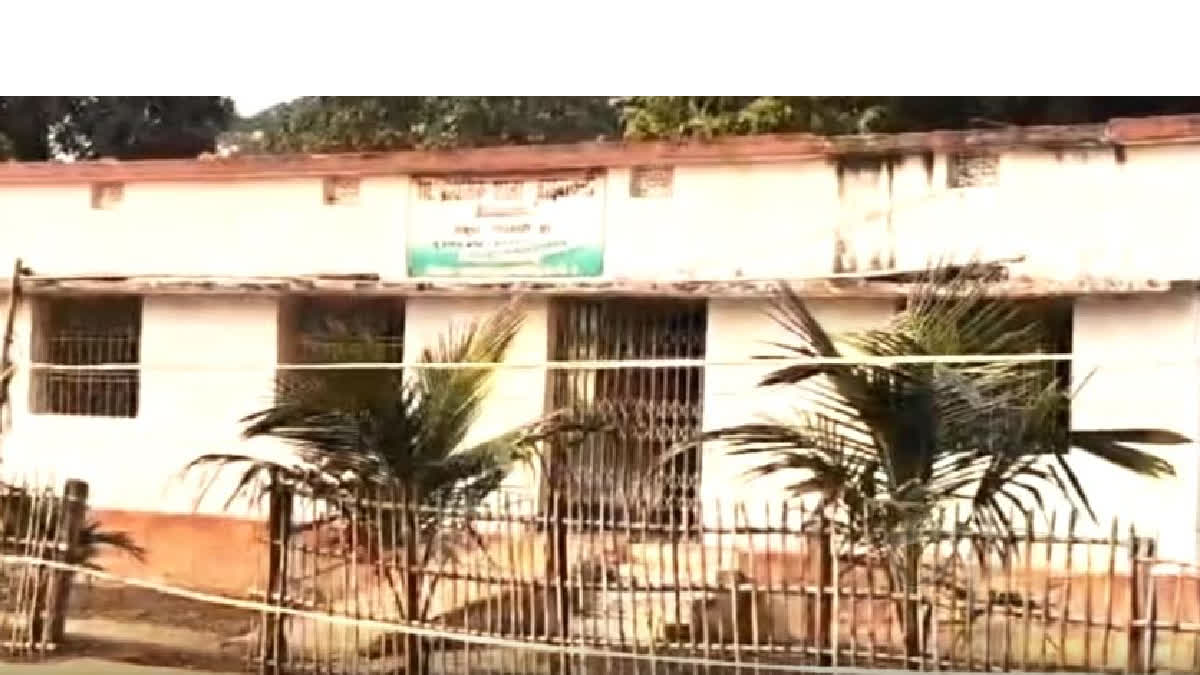Kanker: Naxalism, which took root in West Bengal's Naxalbari in 1967, traversed far from its land of origin and found its most violent outlet in Chhattisgarh.
Nestled in the lap of nature, the hinterlands of Bastar have bled the most among all regions in the country. Naxalism for the last several decades, thrived there. In fact, terrorism has been the other ugly spot in Bastar's beauty besides poverty.
ETV Bharat's investigation took its team to Bastar where the first Naxalite encounter in the history of the state took place. All the districts of the tribal-majority Bastar division have been bearing the brunt of red terror for years. During this time, many soldiers lost their lives as there had been loss of lives of many innocent tribals.
Naxalites formed their own capital
Tadvayli village, located at the end of North Bastar's Kanker district, which shares its border with Maharashtra, was the entry point of Maoists in the state. Naxalites set foot in this area around the 90s. News of activities of Naxalites gave the government jitters at that time. Taking advantage of dense forests and the border of Chhattisgarh-Maharashtra, Naxalites reached Abujhmad and started gathering there. The area gradually became known as the capital of Naxalites.
Tadvayli village witnessed the first Naxalite encounter in the state. Just the time when Naxalites were cooking food near a river here, they were challenged by police. A fierce encounter took place between the two sides. As a result, dreaded Naxalite leader Ganapati was gunned down. The rest of the Naxalites managed to escape from the spot. This was the first encounter after the Naxalites entered Chhattisgarh.
A memorial for Naxal leader
After Ganapati was killed, the Naxalites built a memorial which was demolished by the soldiers. When ETV Bharat interacted with the villagers, they accepted in a hushed voice that the first encounter took place in this area. They, however, refused to give further details.
Around 1984-1985, Naxalites entered Chhattisgarh's border from Maharashtra near Todgatta. “Before that, we had not heard about Naxalites. When Ganapati was killed, we came to know that Naxalites made deep inroads in the state,” a police official, who requested anonymity, said.
Giving details of the state of affairs then, retired police officer RP Singh said at the time of that incident, Pakhanjor police station and Bande outpost existed. Tadvayli village came under Bande outpost. “The incident took place before my posting. Police had a hectic time as information regarding movements of Naxalites would pour in from hilly interiors. During that time, we faced challenges regarding movement and network as the village and the surrounding area were deprived of roads and other facilities for commuting,” Singh said.
He further said, “In 1984, a local Bengali youth gave input to the police team. Based on his tip-off, police conducted an operation. Ganapati was killed then.”
Changing times signal drop in movements
Time changed, circumstances changed. After the establishment of police stations and camps, the terror of Naxalites decreased. Development work started in the area. A paved asphalt road has been built till the border of Chhattisgarh. Electricity and water facilities were made available to the villagers. Naxalism seems to be on the wane now. If the SP is to be believed, now the people of Tadvayli village are opposing Naxalism.
Last and this year, there were reports of Maoist movements in the village but timely intervention of security forces foiled the bid of Naxalites. “Now, there is an atmosphere of peace at that place. There has been a lot of change due to the arrival of roads and electricity. Villagers are opposing Naxalism,” Indira Kalyan Ellisela, Superintendent of Police of Kanker, said.
Despite all these, Naxalism has not died down totally. Encounters still take place between soldiers and Naxalites in the surrounding areas though security forces expedited anti-Maoist operations in the area. So far, 207 Naxalites have been killed in Bastar division. Talking about North Bastar, 40 Naxalites have been killed in encounters. Among these, major encounters have taken place in the 50 km area of Tadvayli area.
Security forces claim success
Naxalism had deep roots in the Maad forests around Tadvayli area. Even today, Naxalites try to regroup again in Maad forests along Maharashtra-Chhattisgarh border of Tadvayli. Their efforts, however, failed to bear fruits. As many as 29 Naxalites have been killed in Hapatola encounter and five dreaded Naxalites have been killed in Tekameta. More than 210 Naxalites were gunned down over the last 11 months in the state.



